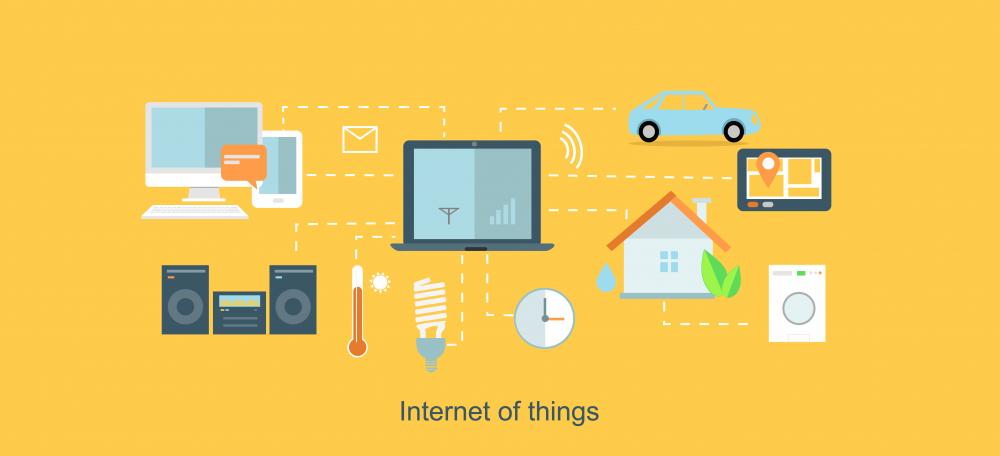Changing the face of risk in the digital age
Democratisation of insurance through connected coverage is the in-thing and IoT is set to transform the fundamentals of the business
Much has been discussed of late in the media about the digitalisation of the insurance industry by innovation torchbearers.
The prospects of disrupting one of the oldest trades in the world with technology are exhilarating, especially when examined from the outset.
The concept of insurance fundamentally involves the transfer and distribution of risk as a means of protection from financial loss. Before the introduction of the Internet of Things (IoT), the valuation of risks has been subjected to the complexities of actuarial science, and is not easily understood by the man on the street. Complex pricing models arise as they are necessary to help insurers in a market of imperfect information, and to mitigate moral hazards which occur when customers neglect to manage their own risks after taking up insurance.
For example, people who are susceptible to health risks may have the propensity to buy more health insurance. With inherently insufficient information about their customers, insurers participating in the national healthcare system are compelled to raise premiums for their entire pool of customers to redistribute the risk of providing universal coverage in response to higher claims. This could easily result in an unfavourable situation for both customers and insurers.
With imperfect knowledge about their customers, insurers have no way of completely eliminating the moral hazard problem inherent in an insurance transaction.
This conundrum is what makes the concept of connected coverage so revolutionary for the industry. Connected coverage refers to the use of devices such as wearables, telematics devices or IoT-enabled devices to bridge the information gap between insurers and their customers.

Usage-Based Insurance
The use of wearable technology has provided insurers with a greater level of predictability on the health of their customers, which can be extended to monitor their daily activities and vital signs such as their heart rate and blood pressure. In motor insurance, insurers are starting to use IoT, largely through telematics and mobile devices to track drivers' habits and usage.
Information transparency through connected coverage has led to many insurers turning to usage-based insurance (UBI) as a new form of pricing model. UBI as a two-pronged approach allows both insurers and customers to obtain real-time information, and gives the customers greater control in adjusting the pricing mechanisms based on their own usage.
The concept of UBI overcomes part of the moral hazard problem through three key areas: behavioural profiling at the application stage; encouraging risk-minimising behaviour during the insured period; and greater efficiency in processing claims.
Customers who sign up for UBI are those who intrinsically desire greater control in the risk management process and are ready to adopt a conscientious mindset to avoid risk. There is a high degree of self-selection, and this gives the insurer a greater certainty over the customer's profile.
The customer is generally rewarded for risk-minimising behaviour during the coverage period. The insurer can in turn, operate at lower cost of underwriting the risk, with an improved understanding of the customer's behavioural patterns. For instance, when the customer exhibits safer driving behaviour or healthier lifestyles such as regular exercise, their premiums will be adjusted to reflect their reduced risk. The real-time feedback that comes with UBI has also shown to positively impact behavioural change.
Greater transparency through traceable behaviour and data also enhances the efficiency of the claims process and leads to faster turnaround times, and fairer premiums in comparison with the traditional model. In the case of a car accident, the data provided by telematics-equipped vehicles can provide a snapshot of the event. This reduces the amount of time involved in investigation and determining the merits of the claim.
UBI can consequently drive down the incidence of fraudulent claims and moral hazard, and this is necessary for insurers to continue offering affordable insurance to the wider population.
Over a period of time, insurers will be able to segregate the best risks from the people who use UBI policies and incentivise this group of customers even further.
The adoption of IoT devices clearly has the advantage of providing greater transparency to both parties. It disrupts opaque business models and democratises the insurance process.
With the usage of IoT-powered devices from fitness trackers to telematics, insurance companies have placed risk management into the hands of the customers and transformed how they interact with their customers.
In our everyday lives, we are already experiencing IoT features associated with the connected car such as automatic parking. A 2014 research by ATKearney substantiates further that UBI is catching on fast, and by 2025, telematics will be used by 30 per cent of the global market to complement driver-assist technologies, semi-autonomous or autonomous vehicles, and recovery of stolen vehicles.
Emergence of Insurtech
In Singapore too, authorities are looking at integrating in-vehicle telematics with the road pricing system. As cars become more and more connected, the transformation of the motor insurance industry is but an eventuality.
In the health insurance realm, experts have said that wearable biometric sensors will make healthcare "predictive, preventive, participatory and personalised", providing an incentive to customers to lead healthier lifestyles with the reward of lower premiums.
From an insurer's standpoint, IoT is set to transform the fundamentals of the insurance business and the way insurers underwrite policies and respond to claims.
The combined usage of advanced artificial intelligence, machine learning and robotic process automation as well as the adoption of blockchain technology will allow insurers to automate their processes for speed, accuracy and efficacy.
The future of the insurance industry will see a paradigm shift from the insurer taking on a purely transactional role, to a more engaged role of helping customers to better manage risk by employing innovative, predictive technologies. Artificial intelligence in the form of chatbots are already enabling insurers to connect with their customers round-the-clock and enhance their customer experience.
To help customers adopt to technologies quickly, insurers can play a more prominent role in educating them on the benefits, just as customers need to be more receptive to them.
Ultimately, the emergence of InsurTech with the pairing of IoT and artificial intelligence is set to alleviate the age-old problem of imperfect information, build transparency and trust, and reduce the financial risks for both the insurer and the insured.
With big data technology as a key driver of change, democratising insurance through connected coverage will only make it more accessible and affordable for customers, and alter the face of risk as we know it.
An edited version of this article has been published in The Business Times on 19 October 2017.
The article was contributed by Jeremy Lian, Senior Vice-President (Technical Services), MSIG Insurance (Singapore) Pte. Ltd


